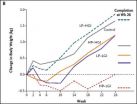(Press-News.org) CAMBRIDGE, Mass. -- Neuroscientists at MIT and Harvard have made the surprising discovery that the brain sees some faces as male when they appear in one area of a person's field of view, but female when they appear in a different location.
The findings challenge a longstanding tenet of neuroscience — that how the brain sees an object should not depend on where the object is located relative to the observer, says Arash Afraz, a postdoctoral associate at MIT's McGovern Institute for Brain Research and lead author of a new paper on the work.
"It's the kind of thing you would not predict — that you would look at two identical faces and think they look different," says Afraz. He and two colleagues from Harvard, Patrick Cavanagh and Maryam Vaziri Pashkam, described their findings in the Nov. 24 online edition of the journal Current Biology.
In the real world, the brain's inconsistency in assigning gender to faces isn't noticeable, because there are so many other clues: hair and clothing, for example. But when people view computer-generated faces, stripped of all other gender-identifying features, a pattern of biases, based on location of the face, emerges.
The researchers showed subjects a random series of faces, ranging along a spectrum of very male to very female, and asked them to classify the faces by gender. For the more androgynous faces, subjects rated the same faces as male or female, depending on where they appeared.
Study participants were told to fix their gaze at the center of the screen, as faces were flashed elsewhere on the screen for 50 milliseconds each. Assuming that the subjects sat about 22 inches from the monitor, the faces appeared to be about three-quarters of an inch tall.
The patterns of male and female biases were different for different people. That is, some people judged androgynous faces as female every time they appeared in the upper right corner, while others judged faces in that same location as male. Subjects also showed biases when judging the age of faces, but the pattern for age bias was independent from the pattern for gender bias in each individual.
Afraz believes this inconsistency in identifying genders is due to a sampling bias, which can also be seen in statistical tools such as polls. For example, if you surveyed 1,000 Bostonians, asking if they were Democrats or Republicans, you would probably get a fairly accurate representation of these percentages in the city as a whole, because the sample size is so large. However, if you took a much smaller sample, perhaps five people who live across the street from you, you might get 100 percent Democrats, or 100 percent Republicans. "You wouldn't have any consistency, because your sample is too small," says Afraz.
He believes the same thing happens in the brain. In the visual cortex, where images are processed, cells are grouped by which part of the visual scene they analyze. Within each of those groups, there is probably a relatively small number of neurons devoted to interpreting gender of faces. The smaller the image, the fewer cells are activated, so cells that respond to female faces may dominate. In a different part of the visual cortex, cells that respond to male faces may dominate.
INFORMATION:
Source: "Spatial Heterogeneity in the Perception of Face and Form Attributes" by Arash Afraz, Maryam Vaziri Pashkam, and Patrick Cavanagh. Current Biology, 24 November, 2010
Written by Anne Trafton, MIT News Office
Study finds that the same face may look male or female
Depending on where it appears in a person's field of view
2010-11-25
ELSE PRESS RELEASES FROM THIS DATE:
A decade of refinements in transplantation improves long-term survival of blood cancers
2010-11-25
SEATTLE – A decade of refinements in marrow and stem cell transplantation to treat blood cancers significantly reduced the risk of treatment-related complications and death, according to an institutional self-analysis of transplant-patient outcomes conducted at Fred Hutchinson Cancer Research Center.
Among the major findings of the study, which compared transplant-patient outcomes in the mid-'90s with those a decade later: After adjusting for factors known to be associated with outcome, the researchers observed a statistically significant 60 percent reduction in the ...
Study of 10 other hospitals found no reduction in adverse medical events over 6 years
2010-11-25
STANFORD, Calif. — Despite concerted efforts, no decreases in patient harm were detected at 10 randomly selected North Carolina hospitals between 2002 and 2007, according to a new study from the Stanford University School of Medicine, Harvard Medical School and the Institute for Healthcare Improvement.
Since a 1999 Institute of Medicine report sounded the alarm about high medical error rates, most U.S. hospitals have changed their operations to keep patients safer. The researchers wanted to assess whether these patient-safety efforts reduced harm. They studied hospitals ...
Pulsating star mystery solved
2010-11-25
The new results, from a team led by Grzegorz Pietrzyński (Universidad de Concepción, Chile, Obserwatorium Astronomiczne Uniwersytetu Warszawskiego, Poland), appear in the 25 November 2010 edition of the journal Nature.
Grzegorz Pietrzyński introduces this remarkable result: "By using the HARPS instrument on the 3.6-metre telescope at ESO's La Silla Observatory in Chile, along with other telescopes, we have measured the mass of a Cepheid with an accuracy far greater than any earlier estimates. This new result allows us to immediately see which of the two competing ...
Bonn physicists create a 'super-photon'
2010-11-25
By cooling Rubidium atoms deeply and concentrating a sufficient number of them in a compact space, they suddenly become indistinguishable. They behave like a single huge "super particle." Physicists call this a Bose-Einstein condensate.
For "light particles," or photons, this should also work. Unfortunately, this idea faces a fundamental problem. When photons are "cooled down," they disappear. Until a few months ago, it seemed impossible to cool light while concentrating it at the same time. The Bonn physicists Jan Klärs, Julian Schmitt, Dr. Frank Vewinger, and Professor ...
Erythromycin A produced in E. coli for first time
2010-11-25
MEDFORD/SOMERVILLE, Mass. -- Researchers at Tufts University School of Engineering have reported the first successful production of the antibiotic erythromycin A, and two variations, using E. coli as the production host.
The work, published in the November 24, 2010, issue of Chemistry and Biology, offers a more cost-effective way to make both erythromycin A and new drugs that will combat the growing incidence of antibiotic resistant pathogens. Equally important, the E. coli production platform offers numerous next-generation engineering opportunities for other natural ...
How pathogens hijack host plants
2010-11-25
Palo Alto, CA— Infestation by bacteria and other pathogens result in global crop losses of over $500 billion annually. A research team led by the Carnegie Institution's Department of Plant Biology developed a novel trick for identifying how pathogens hijack plant nutrients to take over the organism. They discovered a novel family of pores that transport sugar out of the plant. Bacteria and fungi hijack the pores to access the plant sugar for food. The first goal of any pathogen is to access the host's food supply to allow them to reproduce in large numbers. This is the ...
UCLA researchers discover drug resistance mechanisms in most common form of melanoma
2010-11-25
Researchers with UCLA's Jonsson Comprehensive Cancer Center have found that melanoma patients whose cancers are caused by mutation of the BRAF gene become resistant to a promising targeted treatment through another genetic mutation or the overexpression of a cell surface protein, both driving survival of the cancer and accounting for relapse.
The study, published Nov. 24, 2010, in the early online edition of the peer-reviewed journal Nature, could result in the development of new targeted therapies to fight resistance once the patient stops responding and the cancer ...
Researchers shine light on how some melanoma tumors evade drug treatment
2010-11-25
The past year has brought to light both the promise and the frustration of developing new drugs to treat melanoma, the most deadly form of skin cancer. Early clinical tests of a candidate drug aimed at a crucial cancer-causing gene revealed impressive results in patients whose cancers resisted all currently available treatments. Unfortunately, those effects proved short-lived, as the tumors invariably returned a few months later, able to withstand the same drug to which they first succumbed. Adding to the disappointment, the reasons behind these relapses were unclear.
Now, ...
An answer to a longstanding question: How HIV infection kills T cells
2010-11-25
Researchers appear to have an explanation for a longstanding question in HIV biology: how it is that the virus kills so many CD4 T cells, despite the fact that most of them appear to be "bystander" cells that are themselves not productively infected. That loss of CD4 T cells marks the progression from HIV infection to full-blown AIDS, explain the researchers who report their findings in studies of human tonsils and spleens in the November 24th issue of Cell, a Cell Press publication.
"In [infected] primary human tonsils and spleens, there is a profound depletion of CD4 ...
Danish researchers finally solve the obesity riddle
2010-11-25
Researchers at the Faculty of Life Sciences (LIFE), University of Copenhagen, can now unveil the results of the world's largest diet study:
If you want to lose weight, you should maintain a diet that is high in proteins with more lean meat, low-fat dairy products and beans and fewer finely refined starch calories such as white bread and white rice. With this diet, you can also eat until you are full without counting calories and without gaining weight. Finally, the extensive study concludes that the official dietary recommendations are not sufficient for preventing obesity. ...
LAST 30 PRESS RELEASES:
Injectable breast ‘implant’ offers alternative to traditional surgeries
Neuroscientists devise formulas to measure multilingualism
New prostate cancer trial seeks to reduce toxicity without sacrificing efficacy
Geometry shapes life
A CRISPR screen reveals many previously unrecognized genes required for brain development and a new neurodevelopmental disorder
Hot flush treatment has anti-breast cancer activity, study finds
Securing AI systems against growing cybersecurity threats
Longest observation of an active solar region
Why nail-biting, procrastination and other self-sabotaging behaviors are rooted in survival instincts
Regional variations in mechanical properties of porcine leptomeninges
Artificial empathy in therapy and healthcare: advancements in interpersonal interaction technologies
Why some brains switch gears more efficiently than others
UVA’s Jundong Li wins ICDM’S 2025 Tao Li Award for data mining, machine learning
UVA’s low-power, high-performance computer power player Mircea Stan earns National Academy of Inventors fellowship
Not playing by the rules: USU researcher explores filamentous algae dynamics in rivers
Do our body clocks influence our risk of dementia?
Anthropologists offer new evidence of bipedalism in long-debated fossil discovery
Safer receipt paper from wood
Dosage-sensitive genes suggest no whole-genome duplications in ancestral angiosperm
First ancient human herpesvirus genomes document their deep history with humans
Why Some Bacteria Survive Antibiotics and How to Stop Them - New study reveals that bacteria can survive antibiotic treatment through two fundamentally different “shutdown modes”
UCLA study links scar healing to dangerous placenta condition
CHANGE-seq-BE finds off-target changes in the genome from base editors
The Journal of Nuclear Medicine Ahead-of-Print Tip Sheet: January 2, 2026
Delayed or absent first dose of measles, mumps, and rubella vaccination
Trends in US preterm birth rates by household income and race and ethnicity
Study identifies potential biomarker linked to progression and brain inflammation in multiple sclerosis
Many mothers in Norway do not show up for postnatal check-ups
Researchers want to find out why quick clay is so unstable
Superradiant spins show teamwork at the quantum scale
[Press-News.org] Study finds that the same face may look male or femaleDepending on where it appears in a person's field of view


